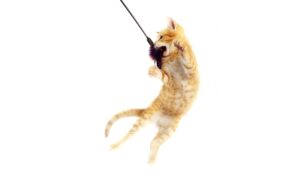The Millennial Mind
Jason Kamery //July 1, 2014//
 In roughly four years, the Millennial generation will eclipse the Baby Boomers in spending power, making now the time for the independent retailer to start marketing to, and equally as important, understanding the Millennial generation. Understanding why they buy the things they do and what is important to them will be crucial to retailers in the near future.
In roughly four years, the Millennial generation will eclipse the Baby Boomers in spending power, making now the time for the independent retailer to start marketing to, and equally as important, understanding the Millennial generation. Understanding why they buy the things they do and what is important to them will be crucial to retailers in the near future.
Wakefield Research, a leading market research consultancy working with many of the world’s most iconic companies, including 40 of the Fortune 100, conducted research in 70 countries to design products, understand consumers, identify new customers and help companies communicate more effectively.
“Boomers are currently the bedrock of the pet retail industry, but the last of the Boomers turn 65 in 2029,” said Nathan Richter, principal of Wakefield Research. “As this generation ages, retailers must learn to reposition their offerings for the Millennial consumer. This requires learning how to tailor products and services to Millennials’ unique needs, which differ from those of Boomers.
“Time and again, we find that many companies are making crucial mistakes when marketing to Millennials; it’s not something that can be learned overnight. The time to begin learning, and building relationships, is now, not five years from now when Millennials have already developed an affinity for your competitor.”
Wakefield recently did a study on the Millennial generation. So the first question a person may have is, who is the Millennial generation?
They range from the ages of 18 to 33 and currently make up 27 percent of the U.S. adult population. It is also projected that by 2018, they will pass the Baby Boomers in spending power at $3.39 trillion.
The psyche of the Millennial pet owner has three characteristics, they are: exhibitionist, conscientious and irrational.
According to Wakefield Research, younger consumers think differently about what is “essential” when purchasing products. Millennials will buy discretionary products under the guise that they are non-discretionary.
“It’s different for every product, but the answer begins with remembering that many of the items and product attributes that Boomers label ‘discretionary’ are actually considered non-discretionary by Millennials,” Richter said. “Many marketers incorrectly assume that Millennials are frivolous consumers, and market to them accordingly. When, in fact, Millennials apply their own specific logic to the purchasing process. Marketers have to learn how Millennials are evaluating their specific offerings in order to learn how to appeal to these consumers.
“Typically, we find in our research that the bar to move Millennials to purchasing is much higher and complex that it is for previous generations of consumers.”
For Zoo Med, the millennial generation happens to be the largest group of consumers interested in and supporting the reptile industry, currently.
“This age group, 15-35 years old, is the generation that is most active in reptile keeping and searching for related material online,” said Keith Morris, national sales manager for Zoo Med.
What Millennials Look For
Some of the discretionary spending by Millennials include that Millennial women buy a third more apparel than non-Millennial women, regardless of income. Millennial men spend twice as much on apparel as non-Millennial males. Also, they are 52 percent more likely than other generations to make impulse or pampering purchases.
Most importantly, 76 percent of Millennials identified an item they are more likely to “splurge” on for their pet than they would for themselves, like expensive treats or a custom bed. Compare that to 50 percent of Boomers, who would “splurge” on certain items.
Millennials expect pet supplies to be BPA-free, 78 percent, and made with natural or organic materials, 76 percent. In addition, 86 percent of Millennials feel “natural” food is essential.
Millennials and Boomers agree equally, at 78 percent, their pet is family. But, 82 percent of Millennials feel that getting a pet is part of preparing to have a family, compared to 59 percent of Boomers who believe that.
Technology is also used more by Millennials, with 69 percent of them saying they are more likely to use technology to keep track of their pet.
Morris from Zoo Med said he believes the millennial generation appreciates and supports companies or products that tend to be socially responsible in production and packaging and that are American made.
“As this generation continues to mature they see the need to retain jobs and employment possibilities here in the U.S. to protect their employment possibilities and those of future generations,” Morris said.
Social Media
Millennials are on social networks, to be specific, 90 percent of them are. On average, Millennials have 250 friends on Facebook, compared to the Boomers’ 74.
“There is only one key to understanding social media in a marketing context, it’s a performance place,” Richter said. “For Millennials, social media is a means of curating their life for their friends. This is an over-simplification, but brands that use social media to enable Millennials to exhibit their tastes and personality will attract an audience.
“Many brands do the opposite, they think of social media as a channel for communicating directly to the consumer, or for the consumer to communicate directly to the brand. Instead, effective branded social media is a three-way relationship. It should provide a branded stage for consumers to participate with other consumers through online communication.”
Among Millennials who have a social media account for their pet, 66 percent are on Facebook, 38 percent are on Twitter and 34 percent are on Instagram.
Also, 55 percent of Millennials with social media follow at least one pet on social media.
“It is true that Millennials are more social media/internet savvy and spend time conducting researching on items of interest whether it’s fashion, pet related concerns, music and entertainment,” said William M. Sherk, Jr., president and CEO of MiracleCorp Products. “Millennials don’t always want what the older generation wanted, in fact, most don’t. They look for a more natural diet, with added benefits, no additives, fillers or preservatives. Packaging is bright and vibrant, cleaner, natural and fresh, with more attention paid to features and benefits.”
According to Morris, social media is where there is an ever increasing division between the Millennials and older generations.
“Millennials have grown up in the digital age, many not knowing a life without smartphones and tablet-type devices,” Morris said. “Because of this dramatic shift in digital connectivity many Millennials are continually plugged into the internet and typically spend more time connected to the internet than they do watching television. Television or traditional advertising does not filter down to the millennial generation very well. The only way to connect with them is through social media.”
Planning for the Future
According to Richter, much of the conventional wisdom about marketing to Millennials is wrong.
“I’ve found that a primary source of these misconceptions about Millennials stem from people’s personal experiences,” Richter said. “Instead of consumers, they see their sons and daughters, which invites a bias that’s difficult to escape. That bias leads them to be dismissive, and prevents them from seeing the Millennial consumer clearly.”
When planning for the Millennial customer, again, younger consumers think differently about what is “essential” when purchasing products.
“This means that whole categories and sub-categories of products that are currently considered luxuries by older consumers will become a must-have for Millennials,” Richter said. “For example, pet clothing, specialized grooming products and specialized pet foods.”
Transparency is also very important to the Millennial generation.
“This generation is accustomed to instant access to large amounts of information,” Richter said. “This is an oversimplification, but if a Boomer evaluates a purchase by two criteria, Millennials evaluate it by four or five. Retailers must cater to this instinct. This means not only including information about materials and place of origin, but also on how the specific design and materials or ingredients of your product benefit the pet and its owner.”
Currently MiracleCorp has a multi-faceted approach to gaining awareness and building its brands. It does this by providing information on its website along with providing content to the retailers it serves.
“Additional communications come from Facebook and Twitter accounts which are actively updated with blogging and blogging support for on our various brand and corporate websites,” Sherk said. “To draw attention to our brands we advertise thru PPC and retargeting marketing programs. Not all of this needs to be electronic as in-store demonstrations offer a great opportunity to showcase our new food and treats. It’s the perfect venue to meet pet parents and address their questions and concerns firsthand.”
Steve Luhrs, the founder of Bionic, realizes the importance of the millennial market and how they are the future of the consumer market going forward.
“Most were raised in a pet loving home, however today many of them are still home or coming back to live, many are waiting longer to get married and have kids, and a great deal of them are tech savvy,” Luhrs said. “I think that we as an industry need to realize what the difficulties are in marketing towards this generation and if we do not start to engage them soon, we could potentially lose our greatest target market for the future.”
Motivating Millennials
Wakefield Research did a Drivers Analysis that goes beyond just understanding what Millennials agree with. It uncovers what motivates and drives their purchase decisions.
The right functional messaging that drives Millennials? Your pet food should be scientifically formulated to help your pet maintain a healthy life.
“Our studies have shown that many companies fundamentally misunderstand how Millennials make purchasing decisions,” Richter said. “This differs by product category, so first things first: Conduct high-quality market research to understand how consumers view your brand and your category. There’s a good chance that you’re relying on assumptions that are incorrect or misdirecting. You can’t sell to someone that you don’t understand.”



















